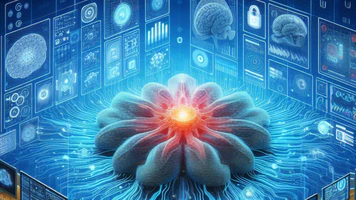
- By Justin Riddiough
- December 8, 2023
Learning Models in Neuromorphic Computing
Understanding the nuances of neuromorphic software begins with an exploration of the algorithms instrumental in facilitating learning and adaptation within neuromorphic systems.
The learning models in neuromorphic computing go beyond traditional algorithms, mimicking the brain’s ability to adapt and evolve.
Explore the Algorithms
Neuromorphic computing relies on specific algorithms designed to emulate the adaptive nature of biological neural networks:
-
Spiking Neural Network (SNN) Learning: SNNs introduce a temporal dimension to learning, capturing the timing and sequence of events. This approach aligns with the brain’s ability to process information in a time-dependent manner.
-
Synaptic Plasticity: Inspired by the plasticity of synapses in the brain, neuromorphic algorithms incorporate synaptic plasticity to enable dynamic adjustments in the strength of connections between artificial neurons.
Challenges and Opportunities in Programming Neuromorphic Systems
As we delve into the programming aspects of neuromorphic systems, it becomes essential to navigate the challenges and opportunities presented in this evolving field.
Programming neuromorphic systems requires a departure from conventional approaches, introducing both hurdles and exciting possibilities.
Discuss Challenges
Programming neuromorphic systems comes with its set of challenges:
-
Complexity of Models: Neuromorphic models, particularly those incorporating spiking neural networks, can be complex to design and implement. Addressing this complexity poses a significant challenge for programmers.
-
Real-Time Processing: Achieving real-time processing in neuromorphic systems demands efficient algorithms and hardware. Balancing the intricacies of neural network computation with the need for speed is a formidable task.
Explore Opportunities
Despite the challenges, programming neuromorphic systems opens doors to innovative opportunities:
-
Adaptive Learning Environments: Neuromorphic systems offer the potential to create adaptive learning environments where the system continuously evolves based on new data and experiences.
-
Edge Computing Applications: The energy-efficient nature of neuromorphic computing makes it suitable for edge computing, enabling intelligent processing closer to the source of data.
In conclusion, delving into neuromorphic software reveals a dynamic landscape of algorithms and programming challenges. As we navigate these intricacies, we unlock the potential for creating intelligent systems that not only compute but also adapt and learn in real-time.


